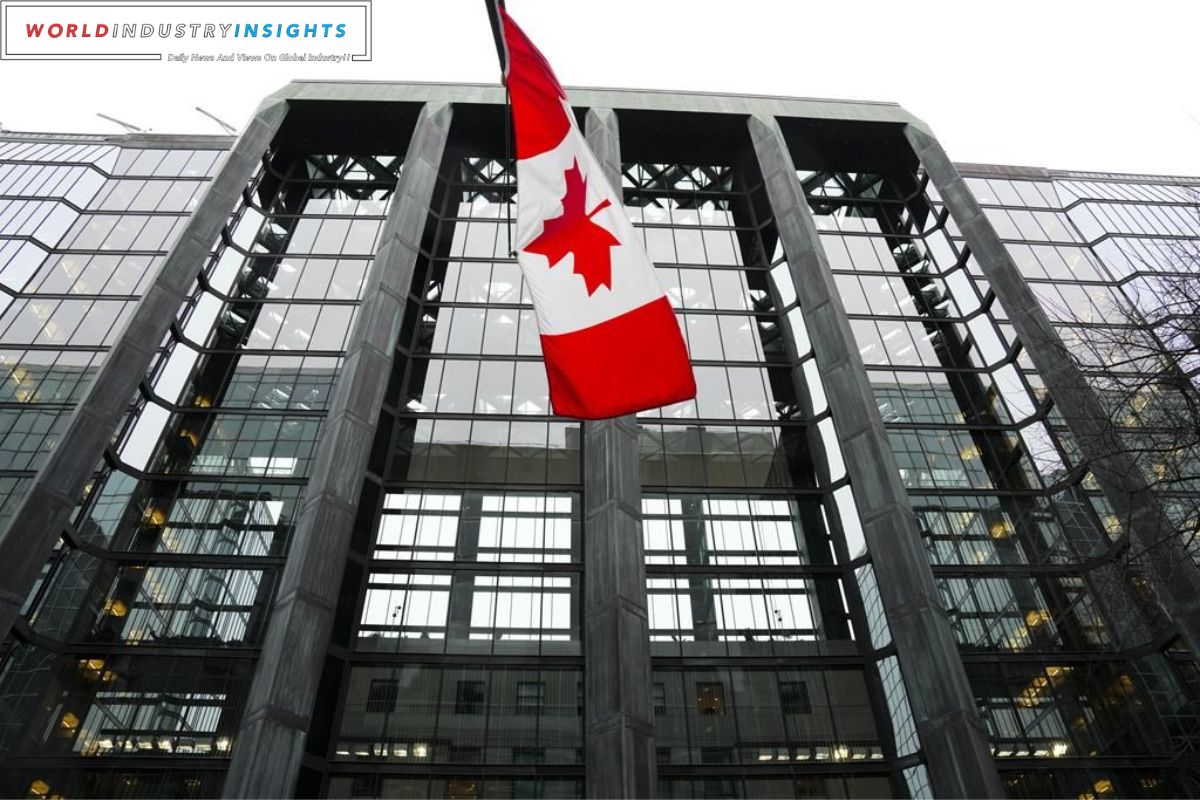Bank of Canada Holds Rates: Are you wondering what the Bank of Canada’s recent decision regarding interest rates means for the future of the country’s economy? Well, hold on tight because things are about to get interesting.
The Bank of Canada has just announced that it will be holding rates steady, fueling expectations for future rate cuts. This move comes amidst an economic contraction and a sluggish growth outlook. Bond yields and the Canadian dollar are expected to be impacted by this decision, as investors brace themselves for potential changes in monetary policy.
With weak growth conditions persisting, it seems that the Bank of Canada is ready to take further measures to stimulate the economy. All eyes are now on the inflation rate and future policy decisions as we navigate these uncertain times.
Key Takeaways
- Bank of Canada holds interest rates steady despite weak growth conditions
- Expectations for future interest rate cuts are heightened
- Monetary policy measures are being implemented to support economic growth
- External factors such as global trade tensions and COVID-19 impact policy decisions
Canada’s Economic Contraction
You should discuss Canada’s economic contraction in the article ‘Bank of Canada Holds Rates, Heightening Expectations for Future Cuts’ by acknowledging the unexpected decline in the country’s economy.
Also Read: Royal Bank of Canada (RY.TO) Q4 Profits Surge Amid Economic Uncertainty
The recent 1.1% contraction in Canada’s economy is a cause for concern. It’s evident that the central bank’s aggressive interest-rate hikes have had a negative impact on growth.
Despite population growth, the Canadian economy is struggling to expand, and this contraction highlights the challenges it faces.
The weak household spending, which hasn’t been this low since 2009, further exacerbates the situation.
It’s crucial to analyze the reasons behind this contraction and the potential consequences it may have on the overall economy.
Impact on Bond Yields and Currency
The recent economic contraction in Canada has had a significant impact on bond yields and currency.
Following the release, Canadian government bond yields saw an increase. Two-year bonds rose by four basis points, while ten-year bonds increased by about six basis points. This reaction in bond yields reflects market concerns over the weak growth outlook and the possibility of interest rate cuts in the future.
Additionally, the Canadian dollar experienced a slight rise of 0.1% on the day. These movements indicate that investors are reacting to the muted growth and potential interest rate cuts expected in the Canadian economy.
It’s clear that the underlying trend shows a sluggish economic activity, which is declining even in per capita terms. The Bank of Canada’s decision to hold rates has only heightened expectations for future cuts, further impacting bond yields and currency.
Future Outlook and Policy Decisions
Expectations for future cuts in interest rates by the Bank of Canada are growing, influenced by the current economic conditions and the decision to hold rates. The central bank’s decision to maintain the interest rate at 5% has heightened the anticipation for future cuts.
Here are five key factors to consider regarding the future outlook and policy decisions:
- Weak economic growth: The sluggish growth in the Canadian economy is a significant concern for policymakers. It reinforces the need for measures to stimulate economic activity, such as interest rate cuts.
- Inflation risks: Despite the current focus on downside risks to inflation, policymakers must also consider the potential upside risks. The Bank of Canada must strike a delicate balance between supporting economic growth and ensuring price stability.
- Market expectations: Traders are already betting on monetary policy loosening in April 2024. This indicates a growing consensus among market participants that rate cuts are on the horizon.
- External factors: The Bank of Canada can’t ignore the impact of external factors on the domestic economy. Uncertainties such as global trade tensions and the ongoing COVID-19 pandemic will influence policy decisions.
- Communication strategy: How the Bank of Canada communicates its future policy intentions will be crucial. Clear and transparent communication will help manage market expectations and prevent excessive volatility.
Weak Growth Conditions and Monetary Policy Measures
Amidst weak growth conditions, the Bank of Canada has implemented monetary policy measures to address the challenges. The decision to hold interest rates steady, while heightening expectations for future cuts, reflects the central bank’s cautious approach to navigate the uncertain economic landscape.
The sluggish global growth outlook, combined with ongoing trade tensions and geopolitical risks, has weighed heavily on the Canadian economy. The Bank of Canada’s measures aim to provide support and stimulate economic activity amidst these challenging conditions.
By keeping interest rates low, the central bank hopes to encourage borrowing and investment, which can help boost consumer spending and business expansion.
Additionally, the Bank of Canada’s commitment to closely monitor economic developments and adjust monetary policy as needed underscores its dedication to fostering sustainable growth in the face of ongoing uncertainties.
Inflation Rate and Bank of England’s Decision
Discussing the inflation rate and the Bank of England’s decision, you’ll find that it’s important to understand the impact on the economy.
The recent decrease in the inflation rate to 3.9% is a positive sign, as it’s the lowest level in over two years. However, it’s still almost twice the target level of 2%, indicating that there’s room for improvement.
The Bank of England’s decision to keep borrowing costs unchanged at 5.25% for the third consecutive month shows caution in the face of easing inflation pressures. While three members of the Monetary Policy Committee voted for a rate hike to 5.5%, the bank remains focused on bringing inflation down to the target level.
This decision is influenced by the UK economy teetering on the edge of a recession, and the potential implications for mortgages and the housing market.
Conclusion Of Bank of Canada Holds Rates
Well, it seems like the Bank of Canada is playing it safe by keeping interest rates on hold. With the country’s economic contraction and weak growth conditions, it’s understandable that they want to take a cautious approach.
However, this decision only heightens expectations for future rate cuts. Bond yields and the currency will continue to be impacted, and the future outlook remains uncertain.
It’s clear that monetary policy measures will be crucial in stimulating the economy and addressing inflation concerns.
Our Reader’s Queries
What is the interest rate forecast for 5 years in Canada?
As of January 2024, the general agreement among market experts is that the Central Bank of Canada will maintain the mortgage interest rate at 5%. However, there are indications of a potential economic slowdown, with fixed mortgage rates expected to decrease towards the end of 2023 or early 2024. Additionally, there may be a rate drop by the Central Bank of Canada in the latter half of 2024.
What is current interest rate in Canada?
As of January 9, 2024, the prime rate in Canada stands at 7.2%.
What is the interest rate in Canada 2023?
On December 6, 2023, the Bank of Canada made an announcement that it would maintain its benchmark rate at five per cent. This decision was in line with the bank’s previous stance on the matter.
What rate does the Bank of Canada control?
The Bank of Canada strives to maintain inflation at 2% which is the midpoint of a target range of 1 to 3%. This is measured by the year-over-year rise in the consumer price index (CPI). The goal is to keep prices stable and ensure that the economy remains healthy. By keeping inflation in check, the Bank of Canada can help to maintain a stable and predictable environment for businesses and consumers alike.




